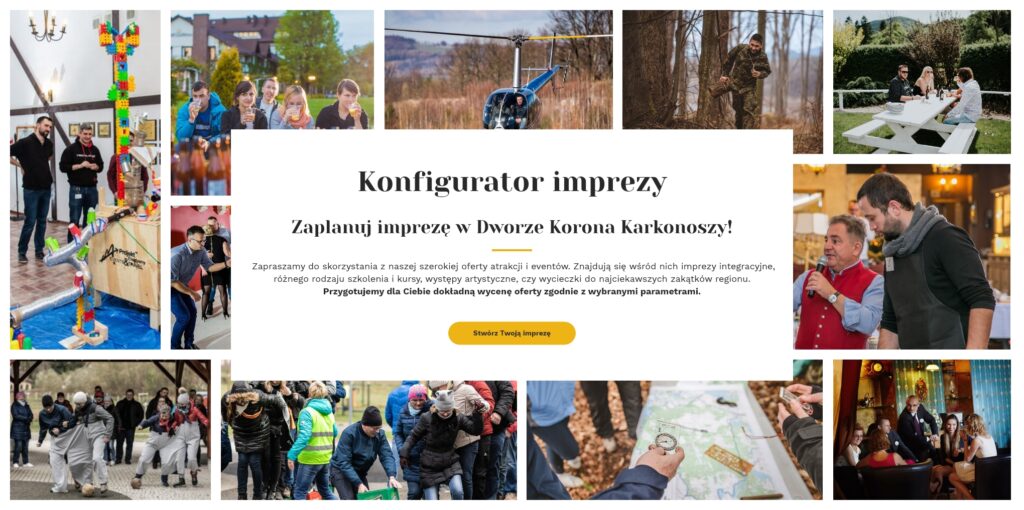Imagine that you have just taught a class. Unfortunately, they didn't go as well as you wanted. You forgot to mention some important points. To make matters worse, you didn't manage to answer all the participants' questions. Organizing training is a real challenge, so check how to prepare for it!
- How to develop a training outline?
- Are you looking for a suitable place to organize a training?
- Organization of trainings - the place matters
- Organization of trainings for employees
- How to transfer knowledge effectively?
- Icebreakers: a way to get your training off to a good start
- Organization of training: popular teaching methods

If you want the organization of training to really make sense, prepare a framework teaching plan. Describe the activities and resources you will use to achieve your goal. Then write down the topics of the classes in detail. Think about how long each session will take you.
Additionally, include teaching methods for each topic in your scenario. Also, think about how you will check whether the participants have acquired knowledge and skills in a given area. You can prepare a simple teaching plan, such as a short outline, or develop a script with hints and a list of questions you are going to ask.
How to develop a training outline?
When preparing a training plan, think about who you are addressing it to. Define your target group. Do you know the participants of the classes, or maybe you have never seen them? What level of knowledge and skills do they have? Get as much information as possible about the participants. Thanks to this, you will create an effective training plan. Remember that whether you train managers, experienced employees, direct reports, new recruits or a mixed group will affect the way you conduct classes.
Remember that we learn in different ways. Some people learn easily through group discussions and exercises, while others quickly remember what they read or saw in a picture or graph. Most people are somewhere in the middle. In this case, it is worth combining several learning styles to keep participants engaged.
Are you looking for a suitable place to organize a training?
We offer ideal conditions - see for yourself!
Organization of trainings - the place matters
You are wondering how to choose place for training? Before you book a room, check if it is air-conditioned. Make sure that it has the appropriate furniture, projector and devices necessary to display a multimedia presentation.
If you're on a budget, you can schedule on-site training. A conference room with comfortable armchairs and a large table will be perfect here. However, if you have the opportunity, move the organization of training to neutral ground. Look for a place where employees feel comfortable. Make sure your chosen resort has an environment that encourages focus and productivity.
Organization of trainings for employees
Integration training for companies conducted by experienced, highly qualified instructors, can solve many problems in the team. When determining the program of classes, the trainer takes into account the needs of a given group. Properly tailored training will help resolve conflicts between employees, improve team communication, and motivate participants to act.
Organizing training takes time and effort. However, it is worth visualizing each training session to achieve teaching goals. Think about what you should say on it. Make sure you provide the information in a logical order. If, despite your efforts, something goes wrong, you can always adapt the plan to the participants' needs.
Imagine that the participants finish the training and go back to the office. The boss asks them what they learned. Think about what you want them to say to him. Keep this in mind when taking care of all the details related to the organization of training.

How to transfer knowledge effectively?
How to organize training? That would fulfill the intended purpose. Professional training will help integrate employees and familiarize them with the new work system. This is a great opportunity to introduce the participants to new products or services offered by the company. An experienced trainer can also suggest how to deal with a stressful situation.
Are you wondering how to bring the participants closer to a given topic? Or maybe you are looking for a proven way to provide them with specific information? Prepare an attractive and clear multimedia presentation. Finally, encourage participants to ask questions.

Icebreakers: a way to get your training off to a good start
Are you wondering how to arouse the interest and commitment of the participants? Start your training with popular icebreakers. Popular games and fun will not only create a nice atmosphere, but also help with integration. They will allow you to avoid embarrassing silence, and additionally provide a lot of positive energy.
Ask participants to sit in a circle. The first person says their name and adds an adjective starting with the same letter, e.g. Paulina-Punktualna. It's best when the trainer starts the fun. The next person is to repeat the name of the coach with the adjective, and then say their name together with the adjective, e.g. Milena-Miła. Each next person repeats names and adjectives in turn, and then adds their own. At the end, the trainer speaks, who repeats the names of the participants and the adjectives given by them in the correct order.
In this way, not only the trainer, but also the whole group concentrates and remembers their names. Of course, you can freely modify this exercise. Instead of adjectives, you can ask participants to name cities or countries, sweets, colors, plants, etc.
Organization of training: popular teaching methods
At the beginning of a training session, you can have a group discussion. Ask attendees a simple introductory question and encourage them to express their opinion. Once you have familiarized yourself with the topic, you can divide the participants into smaller groups. Ask them to discuss the problem and answer the question together. This way, they can more easily analyze what you've told them and then verbalize the new information. You do not force anyone to look for information on their own, and you encourage participants to cooperate.
If you are sure that everyone has acquired a basic understanding of the topic, ask them to talk to a neighbor. A pair exercise is also great when you don't have time for participants to work individually. Whether you choose to work in groups or pairs, include time for feedback. Decide in advance whether you want to receive it from each participant, from a duo or a group. Explain what you are going to do before participants get to work.

The organization of training requires careful preparation. Be sure to link each element of your class to overall goals. Use this principle whether you are focusing on specific skills or team building and motivation.
